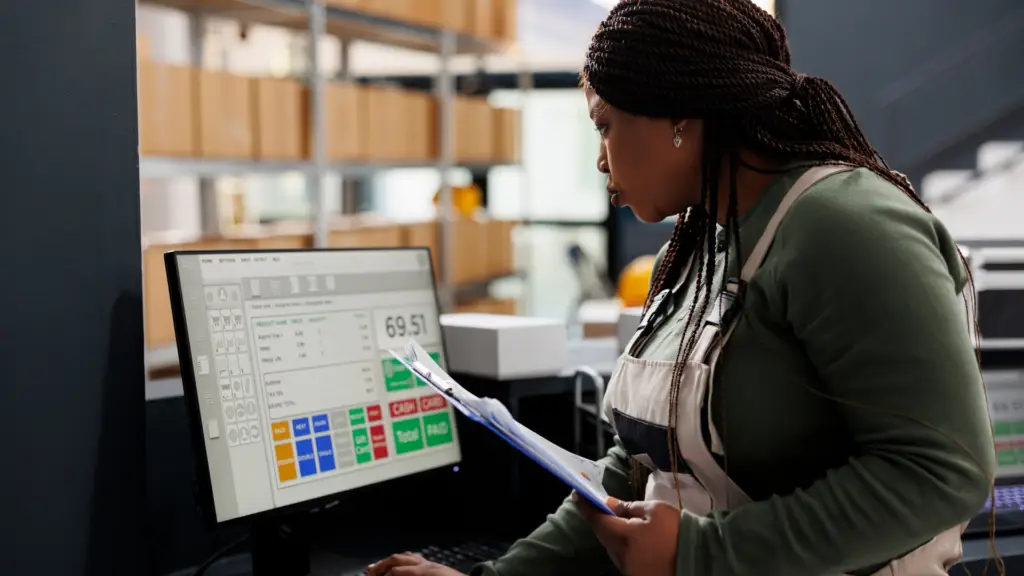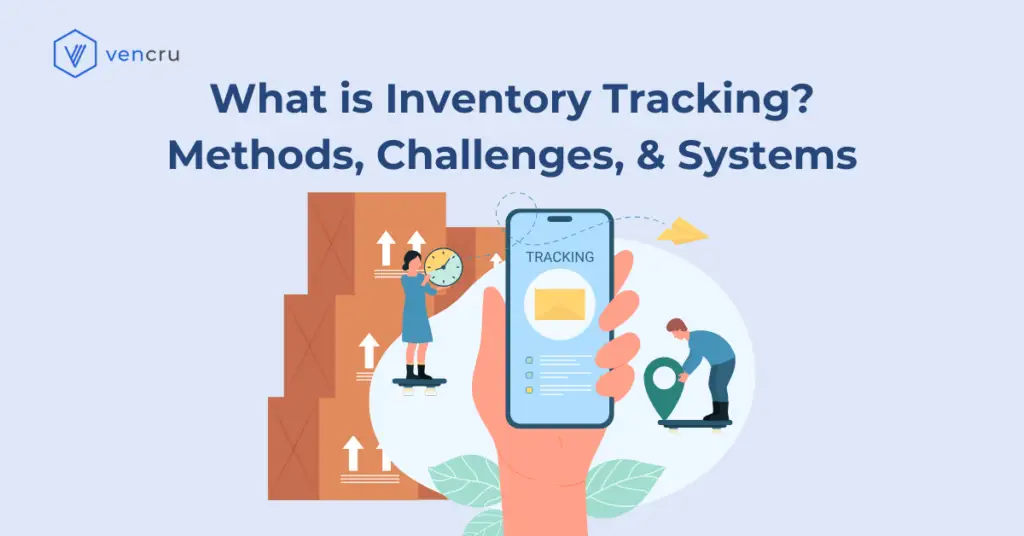Inventory tracking is the process of monitoring and managing a company’s stock of goods (inventory asset), from when they are acquired to the point of sale. Effective inventory management is crucial for maintaining optimal stock levels, reducing costs, and ensuring customers receive their orders on time. This blog will explore various inventory tracking methods, businesses’ challenges, and the systems that can streamline the process. In this blog, we’ll be discussing:
- Understanding Inventory Tracking
- Methods of Inventory Tracking
- Challenges in Inventory Tracking
- Systems for Effective Inventory Tracking
Understanding Inventory Tracking

Inventory tracking involves recording and updating the quantity, location, and status as it moves through the supply chain. This process ensures that businesses can meet customer demand without overstocking or running out of products. Accurate inventory tracking allows you to make more educated purchasing, sales, and manufacturing decisions.
Related Read: What is Inventory Management?
Methods of Inventory Tracking
There are several methods for tracking inventory, each with its own advantages and use cases:
Manual Tracking:
This traditional method involves recording inventory movements on paper or spreadsheets. While simple and cost-effective for small businesses, it is prone to human error and time-consuming for larger inventories. Manual tracking can also lead to inaccuracies in stock control, especially when handling multiple warehouses.
Barcode Systems:
Barcoding is a popular method for assigning each inventory item a unique barcode. Barcode scanners are used to read the barcodes, updating inventory levels automatically. This method improves accuracy and efficiency in inventory controls and is supported by various asset-tracking software. Barcode systems are particularly useful in reducing inventory tracking challenges.
RFID Systems:
Radio Frequency Identification (RFID) uses tags attached to inventory items that emit radio signals. RFID readers capture these signals, providing updates on inventory status and location. RFID systems are highly accurate but can be expensive to implement. They are ideal for large-scale operations needing precise inventory control across multiple warehouses.
Just-In-Time (JIT) Inventory:
JIT is a strategy where inventory is replenished only when needed, reducing holding costs. This method requires precise demand forecasting and inventory tracking to ensure stock levels meet demand without delays. JIT inventory management reduces the risk of overstocking finished goods.
Perpetual Inventory System:
This method continuously updates inventory records in real time as transactions occur. It provides accurate, up-to-date inventory levels and is often integrated with point-of-sale (POS) systems and inventory tracking software. The perpetual inventory system is essential for maintaining effective inventory controls and managing reorder points accurately.
Economic Order Quantity (EOQ):
The EOQ model helps determine the optimal order quantity that minimizes the total cost of inventory management, including holding costs, order costs, and stockout costs. Understanding and calculating EOQ is crucial for effective inventory management and ensuring cost efficiency in purchasing raw materials and finished goods.
Inventory Management Software Systems:

Utilizing advanced software systems, like Vencru, can streamline inventory management processes. These systems offer real-time inventory tracking, automated purchase orders, demand forecasting, and integration with barcode scanners and mobile devices. Inventory management software helps overcome inventory tracking challenges by providing detailed reports and analytics, improving overall stock control.
Challenges in Inventory Tracking

Despite its importance, inventory tracking presents several challenges:
- Data Accuracy: Ensuring that inventory data is accurate and up-to-date is critical. Errors in data entry or delays in updating records can lead to stock discrepancies and affect decision-making.
- Complex Supply Chains: Managing inventory across multiple locations, suppliers, and sales channels can be complex. Coordinating information and maintaining visibility throughout the supply chain is challenging.
- Cost Management: Implementing and maintaining inventory systems can be costly. Businesses need to balance the benefits of accurate tracking with the associated expenses.
- Technology Integration: Integrating inventory management systems with existing technology, such as accounting software and e-commerce platforms, can be difficult. Seamless integration is essential for efficient operations.
- Stockouts and Overstocking: Poor inventory management can lead to stockouts, where items are unavailable for sale, or overstocking, where excess inventory ties up capital and incurs holding costs.
Systems for Effective Inventory Tracking

To overcome these challenges, businesses can use advanced inventory tracking systems. These systems offer features that streamline inventory management, improve accuracy, and provide valuable insights:
- Inventory Management Software: Comprehensive software solutions like Vencru offer tools for tracking inventory levels, generating reports, and managing orders. These systems provide real-time updates and integrate with other business systems, ensuring accurate and up-to-date inventory records.
- Warehouse Management Systems (WMS): WMS software is essential for managing inventory within multiple warehouses. They optimize storage space, improve picking processes, and enhance visibility and control over inventory movements. WMS software utilizes advanced features like barcode scanners and mobile device integration to streamline operations and minimize errors.
- POS Systems: POS systems track sales transactions and automatically update inventory levels. They play a crucial role in inventory management for retail businesses. POS systems ensure accurate stock records and help businesses maintain optimal inventory levels to meet customer demand.
- Enterprise Resource Planning (ERP) Systems: ERP systems integrate various business processes, including inventory management, accounting, and supply chain management. These systems offer a centralized platform for managing inventory across multiple locations and provide a holistic view of operations. ERP software enables businesses to streamline information flow, improve efficiency, and make informed decisions based on accurate data.
Leveraging Vencru for Efficient Inventory Management

Vencru’s inventory management solution is designed to help businesses overcome inventory asset tracking challenges and achieve optimal efficiency. Here’s how Vencru can benefit your business:
- Real-Time Tracking: Vencru provides real-time updates on stock levels, ensuring accurate and up-to-date information. This helps prevent stockouts and overstocking, optimizing your management.
- Automated Processes: Vencru reduces the risk of human error and saves time. Automated reordering ensures that you always have the right stock levels.
- Comprehensive Reporting: With Vencru, you can generate detailed reports on inventory movements, sales trends, and stock levels. These insights help in making informed decisions and improving overall business performance.
- Seamless Integration: Vencru integrates smoothly with other business systems, such as accounting software and e-commerce platforms. This ensures a seamless flow of information and enhances operational efficiency.
- Easy-to-use Interface: Vencru’s intuitive interface makes it easy for users to manage inventory, stock asset movement tracking, and access reports. Even users with limited technical expertise can navigate the system effectively.
Related Read: 4 Practices for Accurate Inventory Tracking in Construction
Conclusion
Inventory tracking is critical to business operations, ensuring stock levels meet customer demand without unnecessary costs and safeguarding business assets. While traditional methods have their uses, advanced systems, such as Vencru’s inventory management solution, considerably improve accuracy, efficiency, and integration. By leveraging Vencru, businesses can streamline inventory processes, overcome challenges, and achieve optimal performance. Start using Vencru today to take control of your inventory and drive your business success.
Ready to leverage Vencru for efficient inventory management? Explore here or book a demo.
Related Content






